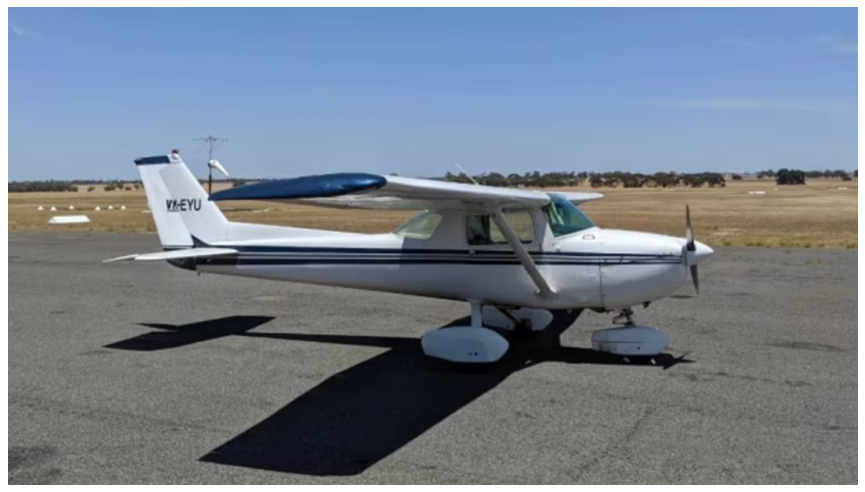
A Cessna 150 stalled shortly after taking off in strong and gusty wind conditions at Bacchus Marsh, north‑west of Melbourne, and was too low to recover before colliding with terrain, an ATSB investigation has concluded.
On the morning of 22 October 2024, a solo pilot intended to fly the Cessna 150L single piston‑engine aircraft from Bacchus Marsh Aerodrome, to Lethbridge, Victoria.
After lining up on runway 27 in strong and gusting winds, the pilot began and then rejected a take‑off roll.
The pilot broadcast the rejected take‑off on the aerodrome’s common traffic advisory frequency, but did not provide any further information as to why the take‑off was rejected.
The pilot then returned to the end of runway 27 and began a second take‑off attempt.
After leaving the runway the aircraft climbed 150 ft, before pitching steeply nose‑up.
Witnesses then observed the nose, then the left wing, drop, before the aircraft entered a vertical descent and collided with terrain in a paddock beside the airfield.
The aircraft was destroyed, and the pilot was fatally injured.
An ATSB transport safety investigation did not identify any issues with the aircraft which could have contributed to the accident, and a post‑mortem examination did not find any evidence of pilot incapacitation or substances which could have affected their capacity to perform the flight.
The investigation concluded the aircraft was probably too slow on take‑off in the strong and gusty wind conditions, and that inputs made to counteract the crosswind increased the angle of attack of the left wing.
“These factors, combined with the wind conditions, increased the risk of a quick and unrecoverable stall,” ATSB Chief Commissioner Angus Mitchell said.
“The stall occurred too close to the ground for the aircraft to be recovered from.”
While an aerodynamic stall can occur at any airspeed, altitude or engine power setting, Mr Mitchell said this accident demonstrated why they are most hazardous during take‑off and landing, when the aircraft is close to the ground.
“When gusting conditions are present, pilots should consider waiting for more benign conditions,” he said.
“Guidance advises pilots to conduct their own testing in progressively higher winds to determine both their own capability and that of the aircraft.”
“If pilots judge weather to be suitable, they should consider climbing out at a higher airspeed to provide a buffer above their aircraft’s stall speed for detection and correction of an impending stall.”
Read the final report: Loss of control and collision with terrain involving Cessna 150L, VH-EYU, Bacchus Marsh aircraft landing area, Victoria, on 22 October 2024


